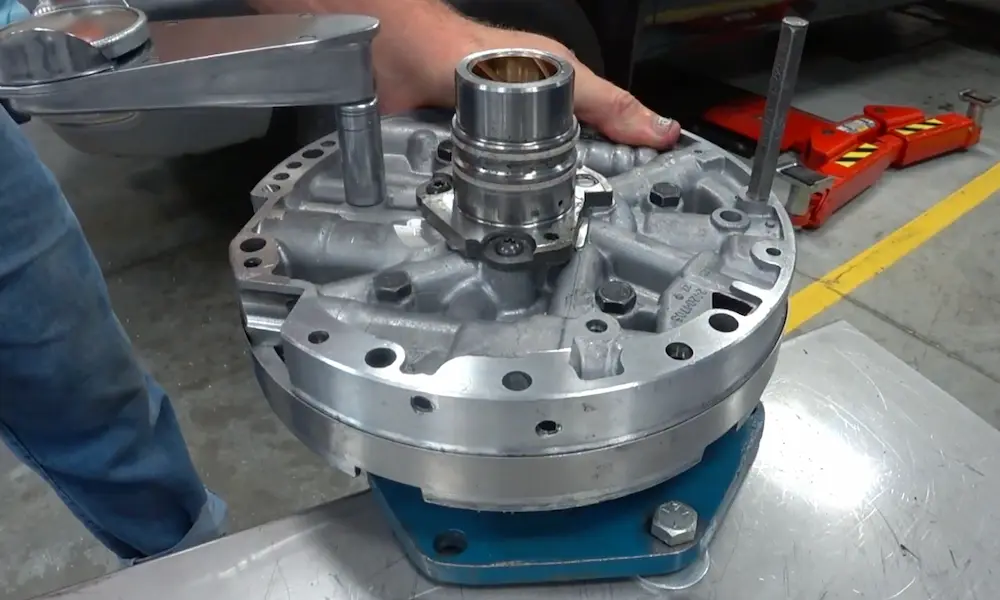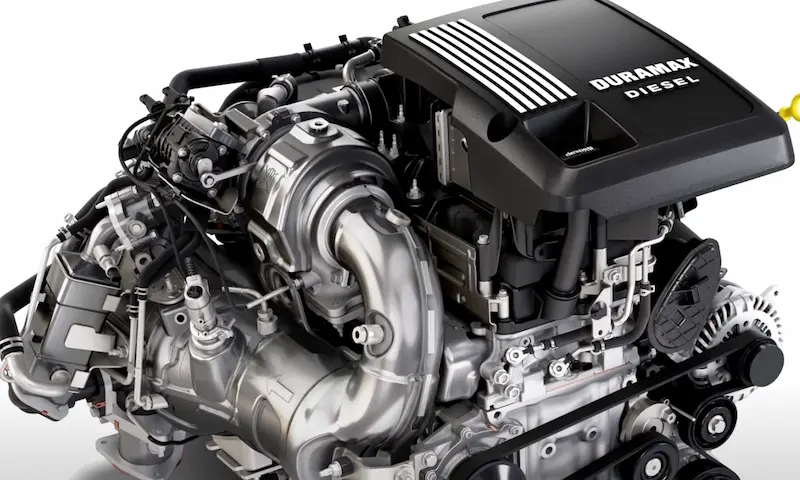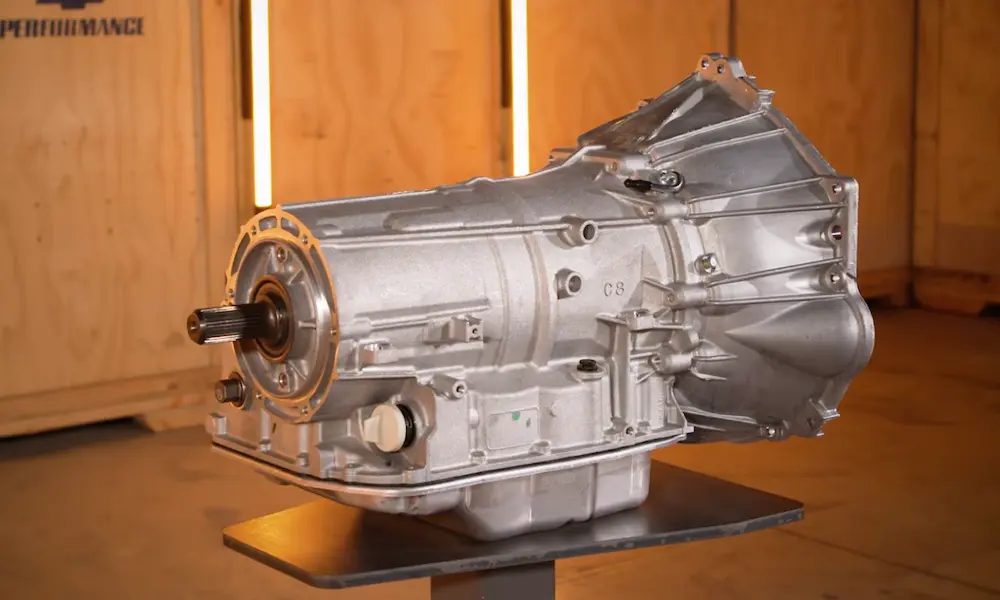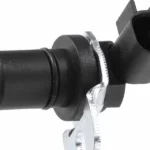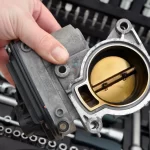Looking to understand what makes the 4.8L LS engine tick? Whether you’re planning a swap, troubleshooting your truck, or just appreciate GM’s engineering, this guide breaks down everything you need to know about this workhorse V8. The 4.8L might be the little brother in the LS family, but it packs impressive potential in a budget-friendly package.
What Is the 4.8L LS Engine?
The 4.8L LS engine (also known as the LR4) is a small-block V8 introduced by General Motors in 1999. It’s the smallest displacement engine in GM’s legendary LS family, featuring a cast-iron block with aluminum heads. Despite being overshadowed by its larger siblings, the 4.8L has become a favorite among budget-minded enthusiasts for its reliability and surprising performance potential.
With a bore of 3.78 inches and a stroke of 3.27 inches, this undersquare design prioritizes torque production while maintaining good fuel economy. Factory versions produce between 255-285 horsepower and 285-295 lb-ft of torque, depending on the model year and application.
4.8 LS Engine Specifications
Let’s dive into the nitty-gritty specs that define this compact powerhouse:
| Specification | Details |
|---|---|
| Displacement | 4.8L (293.3 cubic inches) |
| Block Material | Cast iron |
| Cylinder Head Material | Aluminum |
| Bore × Stroke | 96mm × 83mm (3.78″ × 3.27″) |
| Compression Ratio | 9.4:1 |
| Horsepower | 255-285 hp @ 5,200 RPM |
| Torque | 285-295 lb-ft @ 4,000 RPM |
| Weight | 402-464 lbs (depending on components) |
| Years Produced | 1999-present (as L20 in vans) |
The 4.8L shares many components with the more popular 5.3L, including cylinder heads and accessories. This parts interchangeability is a huge benefit for modifications and repairs.
4.8 LS Engine Block Design
The foundation of the 4.8L LS is its deep-skirt cast-iron block, providing superior strength and durability compared to aluminum blocks. This robust construction features:
- Six-bolt main caps for excellent bottom-end strength
- Siamesed cylinder bores for increased block rigidity
- Stronger than needed for stock power levels, allowing substantial headroom for modifications
Early LR4 engines (1999-2000) with manual transmissions featured a 1.250-inch crankshaft rear flange, while later models standardized to a 0.857-inch flange. This is worth noting if you’re planning a transmission swap or engine build.
The iron block adds weight compared to aluminum LS blocks, but the tradeoff is exceptional durability, especially for forced induction applications.
Rotating Assembly and Internals
Inside the block, the 4.8L uses a robust rotating assembly designed for truck duty:
- Forged steel crankshaft with a 3.27-inch stroke
- Powdered metal connecting rods with cracked caps
- Hypereutectic aluminum pistons with polymer skirt coating
- Oil capacity of 6 quarts with filter
While not as glamorous as forged internals, the factory components can handle impressive power levels. Many enthusiasts have pushed stock bottom ends to 500+ horsepower with forced induction before requiring upgrades.
The 4.8L’s shorter stroke (compared to the 5.3L’s 3.62-inch stroke) allows it to rev more freely, with many engine builders taking advantage of this characteristic for high-RPM applications.
Cylinder Heads and Valvetrain
The aluminum cylinder heads on the 4.8L feature the distinctive “cathedral port” design that helped make LS engines famous. These heads offer:
- 67cc combustion chambers
- 200cc intake ports
- 1.89-inch intake valves
- 1.55-inch exhaust valves
- 15-degree valve angle (compared to 23 degrees on older small blocks)
The valvetrain employs a hydraulic roller camshaft with specs that vary slightly by model year. Most 4.8L engines feature approximately 0.467 inches of intake lift and 0.479 inches of exhaust lift with a duration of about 191/190 degrees.
The 1.7:1 ratio rocker arms provide good valve control, though many enthusiasts upgrade to higher ratios for increased valve lift without changing the camshaft.
Performance Capabilities
Don’t let the 4.8L’s status as the smallest LS engine fool you. Its performance capabilities are impressive, especially when modified:
Stock Performance
In factory form, a vehicle equipped with the 4.8L LR4 typically achieves:
- 0-60 mph: 7.8 seconds (in a Silverado 1500)
- Quarter-mile: 16 seconds at 85-88 mph
- Fuel economy: 14-16 mpg city, 18-20 mpg highway
Modified Potential
The 4.8L truly shines when modified. The engine can safely handle:
- 400+ horsepower with basic bolt-ons (intake, exhaust, cam, tune)
- 500-600 horsepower with forced induction on stock internals
- 1,000+ horsepower with built internals and forced induction
According to performance experts, the 4.8L’s main advantage for high-performance builds is its cost. These engines are typically much cheaper than 5.3L or 6.0L variants, making them perfect for budget builds.
Popular Modifications
The 4.8L LS responds extremely well to modifications, with several proven paths to increased performance:
Bolt-On Power Adders
- Cold air intake: 10-15 hp gain
- Long-tube headers: 15-25 hp gain
- High-flow cats and exhaust: 10-15 hp gain
- Performance camshaft: 50-70 hp gain
- Ported intake manifold: 15-20 hp gain
Forced Induction Options
- Turbocharger systems (single or twin): 150-400+ hp gain
- Supercharger kits: 120-200+ hp gain
- Nitrous oxide: 50-200+ hp gain (depending on jet size)
The 9.4:1 compression ratio makes the 4.8L a perfect candidate for boost, with most engines handling 8-10 psi on stock internals without issue. For higher boost levels, forged pistons and connecting rods are recommended.
The 4.8L often makes more power per pound of boost than larger LS engines due to its better cylinder filling characteristics.
Engine Variants and Applications
The 4.8L LS has appeared in several forms across GM’s lineup:
LR4 (1999-2007)
The original 4.8L variant, found in:
- Chevrolet Silverado 1500
- GMC Sierra 1500
- Chevrolet Tahoe
- GMC Yukon
- Chevrolet Suburban 1500
- GMC Yukon XL 1500
L20 (2007-Present)
An updated version with E85 flex-fuel capability, primarily used in:
- Chevrolet Express vans
- GMC Savana vans
LY2 (2007-2009)
A specialized variant with a 24x reluctor wheel (versus the standard 58x), used in some commercial vehicles and as a service replacement engine.
Common Issues and Reliability
The 4.8L LS has earned a reputation as one of the most reliable modern V8 engines. Most examples easily surpass 250,000 miles with basic maintenance. Common issues are relatively minor:
- Intake manifold gasket leaks (more common after 100,000 miles)
- Water pump failure (typically 150,000+ miles)
- Oil pressure sensor failures
- Fuel injector clogging (especially in early models)
Unlike larger LS engines, the 4.8L never received Active Fuel Management (cylinder deactivation), which eliminates one of the most common failure points in later GM V8s.
The absence of Variable Valve Timing also means fewer potential issues, making the 4.8L an excellent choice for high-mileage reliability.
4.8L vs. 5.3L: Which Is Better?
The 4.8L and 5.3L are nearly identical engines aside from bore and stroke differences. Choosing between them depends on your goals:
Choose the 4.8L if:
- Budget is your primary concern (4.8L engines are typically cheaper)
- You plan to rev the engine beyond 6,500 RPM
- You’re building a boosted setup where displacement is less critical
Choose the 5.3L if:
- You want more torque in stock form
- You prefer a naturally aspirated build
- You need more towing capacity
Many enthusiasts report that boosted 4.8L builds can match or exceed 5.3L performance with the right modifications, all while saving hundreds on the initial engine purchase.
Engine Swap Considerations
The 4.8L makes an excellent swap candidate for older vehicles, offering modern performance in a compact package. Key considerations include:
- Physical dimensions: 28 inches long, 24 inches wide
- Weight: 402-464 lbs (heavier than aluminum LS engines)
- Oil pan clearance: truck pans are often too deep for car chassis
- Accessory drive: truck setups may interfere with steering components
- Electronics: requires proper ECU and wiring harness
According to data from the National Highway Traffic Safety Administration, LS swaps must comply with federal and state emissions regulations when performed on street vehicles.
Purchasing a 4.8L LS Engine
If you’re in the market for a 4.8L, here’s what to look for:
Junkyard Shopping
- Target 2003-2007 models for best performance potential
- Check for signs of overheating or neglect
- Verify the engine turns freely
- Typical cost: $400-700 for complete pullout
Rebuilt Options
- Remanufactured engines typically include new bearings, seals, and gaskets
- Often come with 12-month warranties
- Cost: $1,500-2,500 depending on upgrades
Performance Builds
- Blueprint builds with forged internals start around $4,000
- Turnkey packages with forced induction: $7,000-12,000
The 4.8L’s lower demand compared to 5.3L and 6.0L engines often translates to better availability and lower prices, making it a smart choice for budget-conscious builders.
Building a High-Performance 4.8L
Ready to extract serious power from your 4.8L? Here’s a proven recipe:
Stage 1: 400 Horsepower (Naturally Aspirated)
- Camshaft with 220-230° duration, .550-.580″ lift
- Dual valve springs
- Long-tube headers
- High-flow intake manifold
- 85mm throttle body
- Professional tune
Stage 2: 600 Horsepower (Forced Induction)
- Single 76mm turbocharger (or twin 62mm)
- 42-lb injectors
- Upgraded fuel pump
- Intercooler
- Forged pistons (recommended for reliability)
- Head studs
- Professional tune
Stage 3: 800+ Horsepower
- Forged rotating assembly
- Ported cylinder heads
- Larger turbocharger(s)
- E85 fuel capability
- Standalone engine management
These engines respond exceptionally well to forced induction, often making more power per dollar than their larger counterparts.
Maintenance and Longevity Tips
To keep your 4.8L LS running strong for the long haul:
- Change oil every 5,000 miles with quality 5W-30 synthetic
- Replace the fuel filter every 30,000 miles
- Use a coolant flush and fill every 100,000 miles
- Inspect and replace spark plugs every 100,000 miles
- Consider replacing the timing chain at 150,000+ miles as preventative maintenance
With proper care, these engines regularly exceed 300,000 miles before requiring major internal work.
The 4.8L LS in Modern Performance
While production of the original LR4 ended years ago, the 4.8L continues to find new life in performance applications. Its combination of affordability, compact size, and untapped potential make it a smart choice for budget-conscious enthusiasts.
As newer, more complex engines become increasingly expensive to modify, the simple, robust design of the 4.8L LS ensures its place in the performance landscape for years to come. Whether you’re building a weekend drag car, an off-road beast, or just looking to breathe new life into an aging truck, the 4.8L delivers performance that punches well above its displacement.





